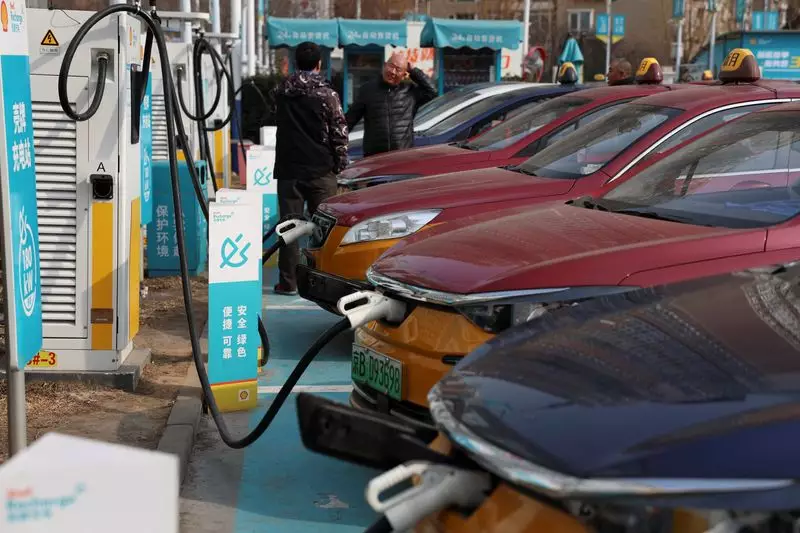China’s transition towards a more sustainable future is evident in the rapid growth of the electric vehicle (EV) market. As EV sales continue to surge, the demand for charging infrastructure has also increased significantly. However, the public EV charging sector in China faces several challenges such as market fragmentation, overcapacity, low utilization rates, and financial losses. State-owned oil companies like Sinopec and PetroChina are attempting to adapt their business models to cater to the evolving needs of EV owners.
One of the key challenges faced by oil companies is the overcapacity of the EV charging sector in China. Despite the growing number of charging points, many of them remain underutilized. For example, at the Xiaowuji station operated by Sinopec, a significant number of charging points were idle on a recent weekday afternoon. This poses a financial challenge for oil companies investing in charging infrastructure.
China’s charging market is highly fragmented, with the top five companies holding a majority market share. This intense competition, combined with a relatively small number of EV drivers, leads to low utilization rates of charging points. Many charging stations stand idle for a significant portion of the day, resulting in financial losses for operators. Companies like Star Charge and TELD are struggling to generate sufficient revenue from their charging points.
Global energy companies like Shell and TotalEnergies have entered the Chinese EV charging market, drawing on their experience from other countries. TotalEnergies, for example, is building 11,000 charging points in partnership with utility China Three Gorges Group. By focusing on additional services such as car wash facilities and food offers, TotalEnergies aims to enhance the customer experience and drive utilization rates.
Despite the challenges, there are opportunities for growth and improvement in the EV charging sector in China. Companies like Shell have reported better utilization rates compared to national averages, with EV drivers visiting charging stations twice as often as conventional vehicle owners visit petrol stations. This indicates a growing demand for reliable and efficient charging infrastructure.
As China’s EV market continues to evolve, there is a need for collaboration between oil companies, charging operators, and policymakers to address the existing challenges and capitalize on the opportunities. Consolidation in the charging sector is likely, with power grid operators expected to emerge as key players. The development of innovative solutions and the provision of value-added services will be crucial in driving the growth of EV charging infrastructure in China.
While the EV charging sector in China faces several challenges, there is immense potential for growth and development. By learning from global best practices, focusing on customer needs, and adapting to changing market dynamics, oil companies and charging operators can pave the way for a sustainable and efficient EV charging ecosystem in China.


Leave a Reply